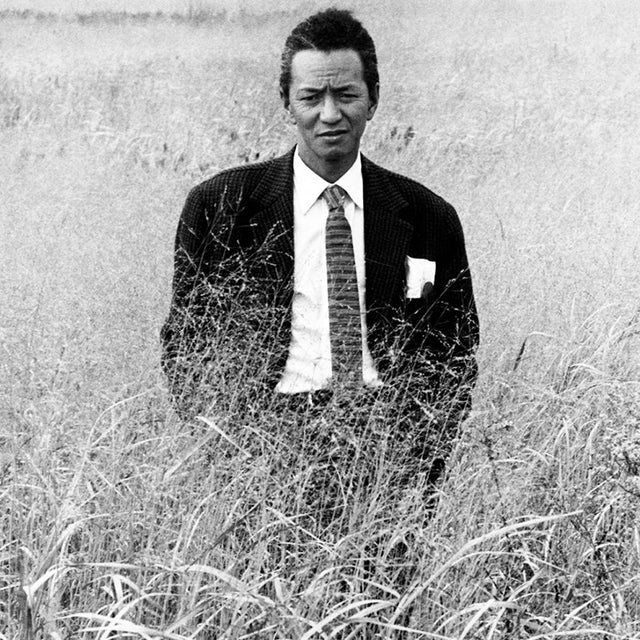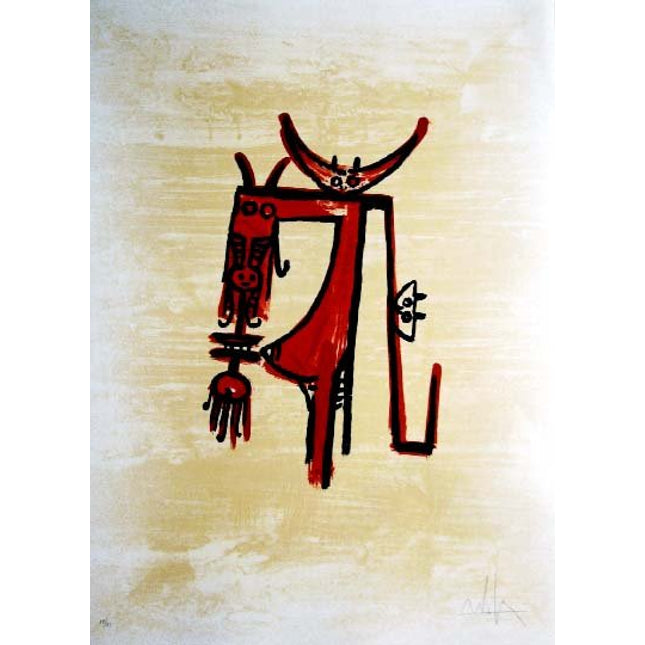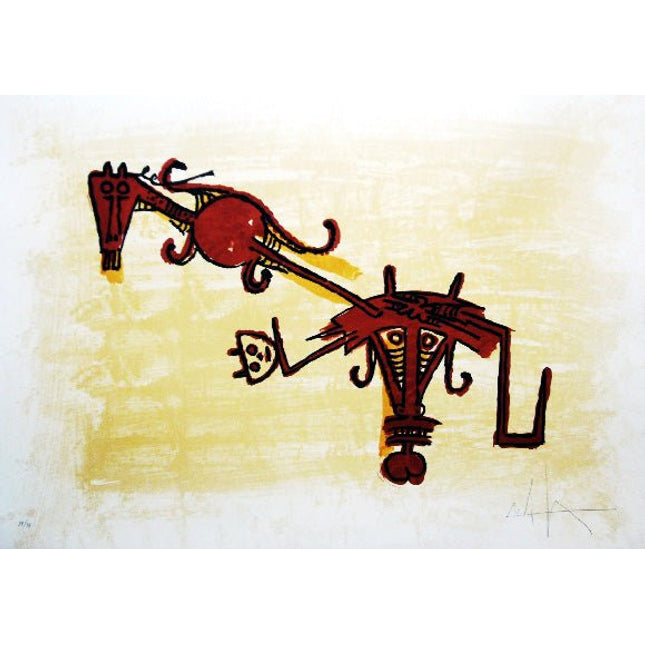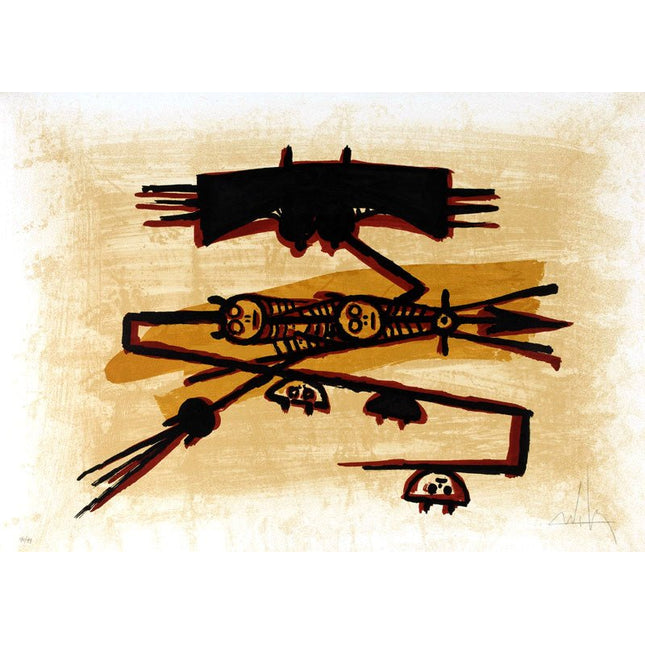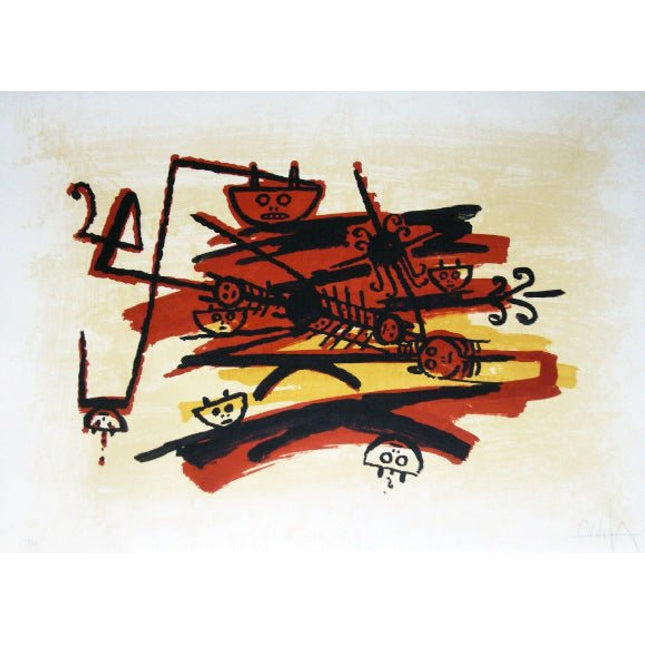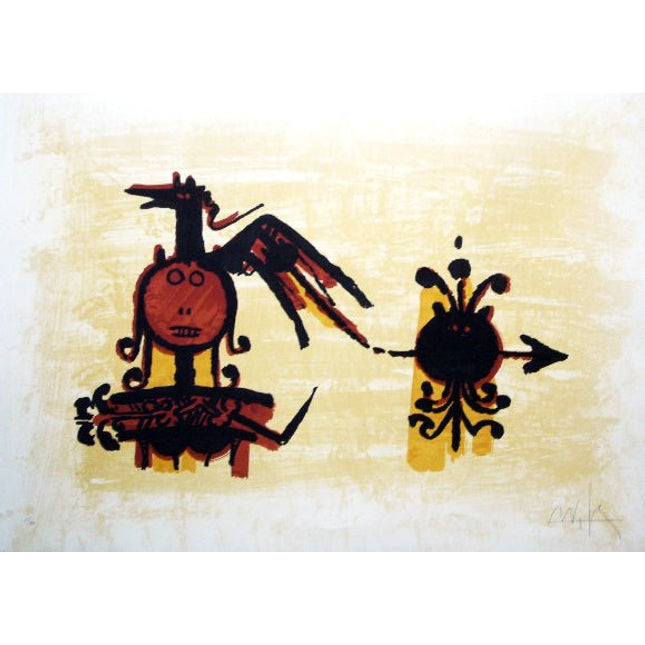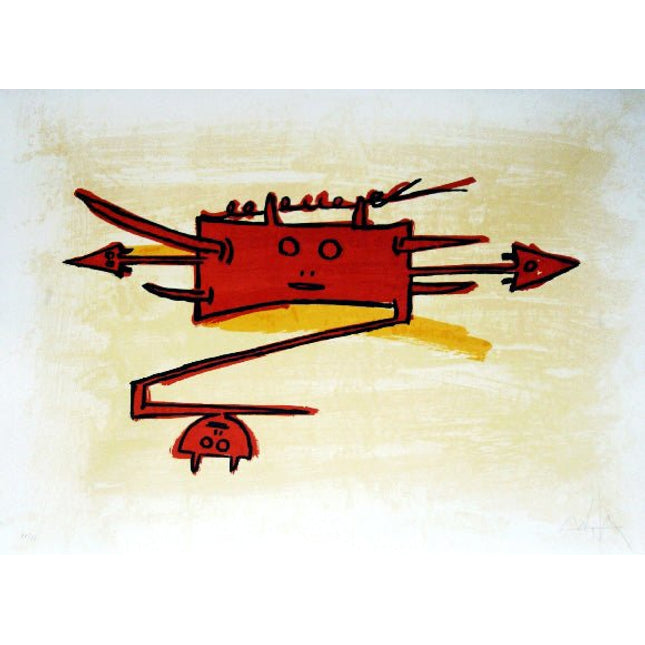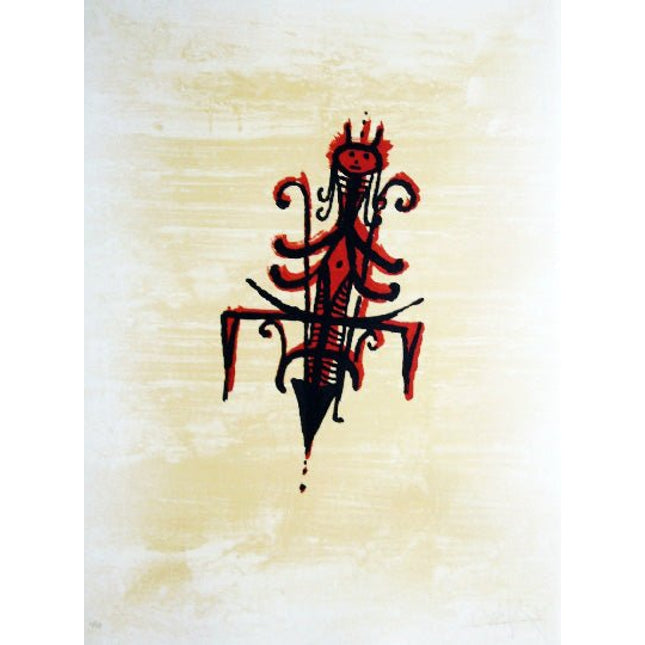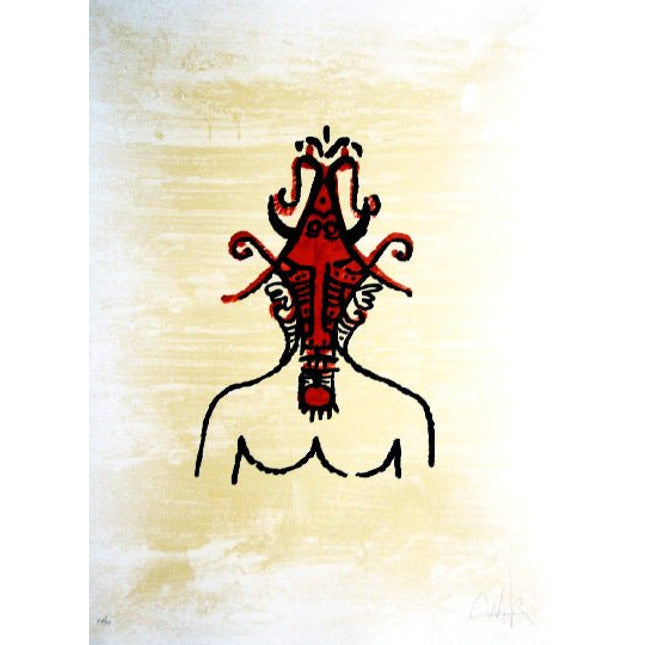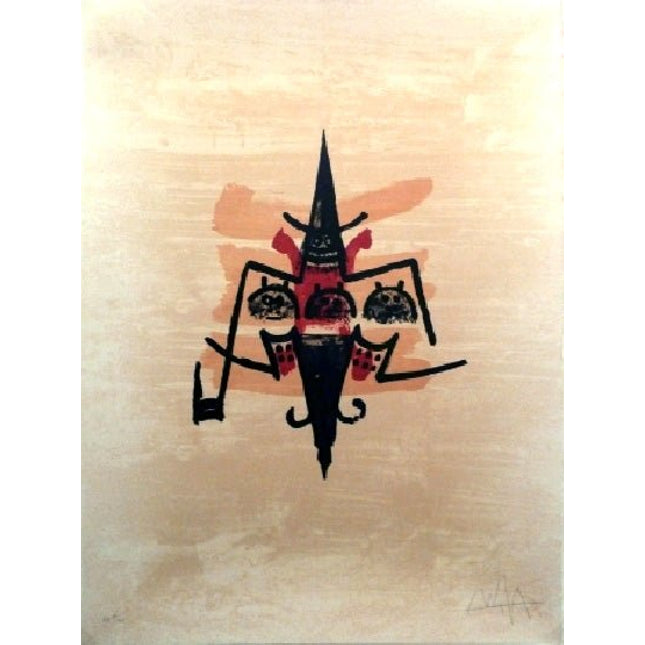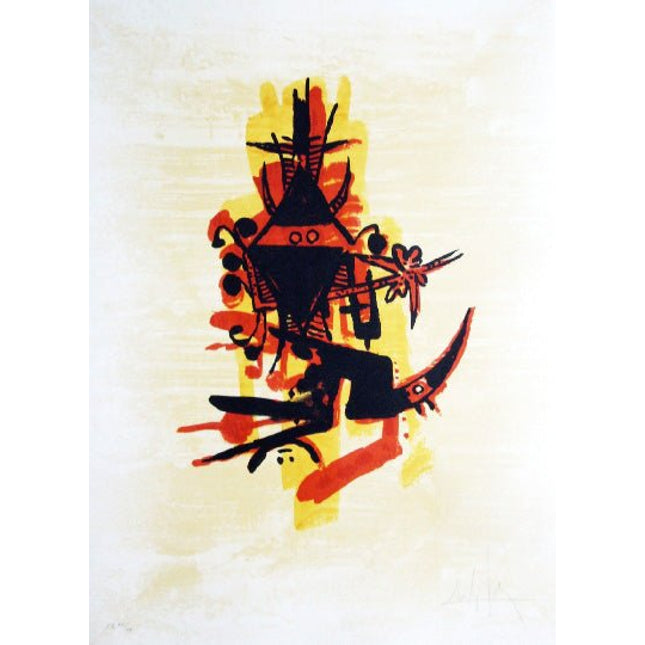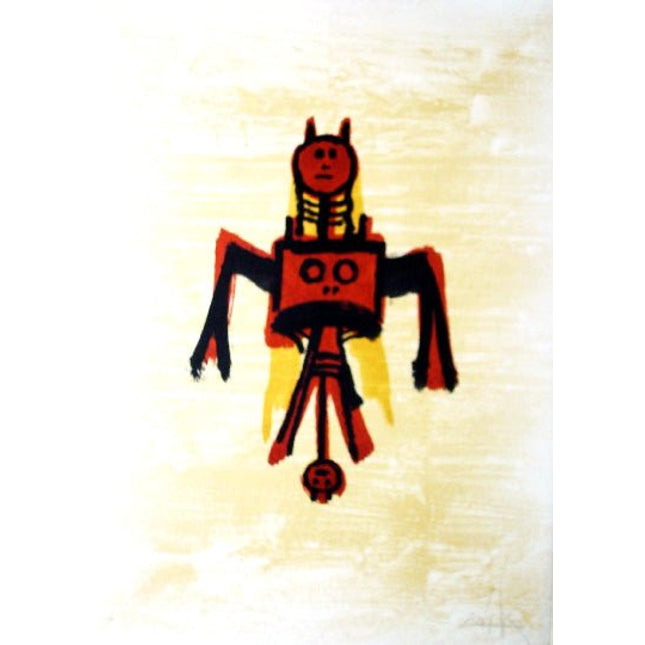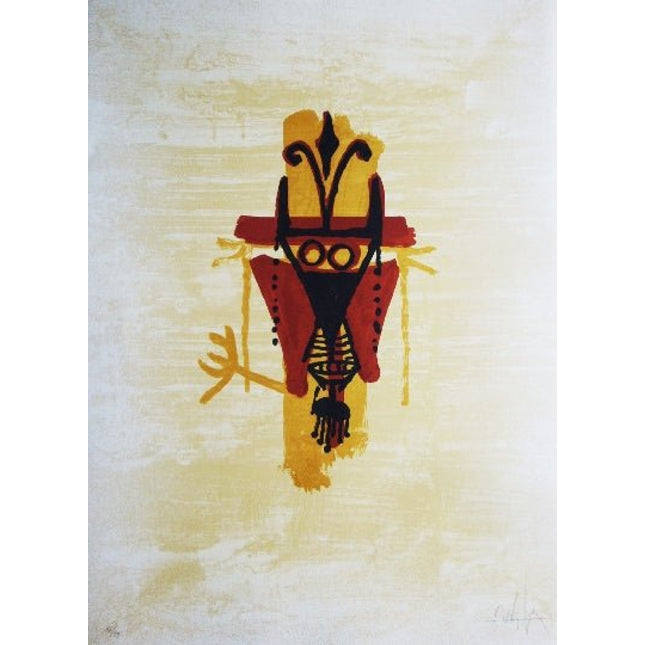Wifredo Lam was born in Sagua La Grande, Cuba, on December 8, 1902. In 1916 his family moved to Havana, where he studied at the School of Fine Arts.
In 1923 he moved to Madrid to study under the tutelage of Fernando Álvarez de Sotomayor, director of the Prado Museum and professor of Dalí. It would be in this city where he met his first wife Eva Piriz, with whom he would marry and have a son in 1929. Two years later, both his wife and his son died of tuberculosis. Since then Wifredo Lam's painting takes a more dark and gloomy dyes.
In the late 30s, Picasso becomes a benchmark for Wifredo Lam, not only in the artistic aspect but also in the political; making Lam a supporter and activist of the Republican cause during the Spanish Civil War. In 1938, Lam changed his residence once more and moved to Paris. There, the artist forged his friendship with Picasso whom encourages him to reinforce his interest in African art and primitive masks. In the French capital, thanks to the Malaga painter Lam gets to meet other artists such as Joan Miró, Tristan Tzara, Georges Braque and Fernand Leger. In 1939 has his first solo exhibition at Pierre Loeb's gallery.
In the late 30s he travelled to Mexico, along with André Breton and Claude Levi-Strauss, where he met Frida Kahlo and her husband Diego Rivera. In the early 40s returns to his native Cuba and is dedicated to travel across the Caribbean while making sporadic trips to New York to exhibit his work at Pierre Matisse Gallery. In the Big Apple Wifredo Lam meets other local artists of the time, such as Robert Motherwell and Jackson Pollock. During this time Wifredo Lam's personality shapes his work, which combines surrealism with cubism while it is inspired by spiritual Santeria and Afro-Caribbean cults.
In 1952, after several years traveling, Lam returns to Europe to live in Paris for three years. Finally finds his place in 1956 at the Italian coast Albisola Mare, where the artists sets up his studio, marries the Swedish painter Lou Laurin and has three children with her.
Wifredo Lam has worked with many media and mediums and can his works can be found in textiles, ceramics, sculpture or painting. During the era of the 70s, the artist shows a great interest in printmaking and performs various portfolios of large format published by Broder, Mathieu and Upiglio workshops.
Many exhibitions have featured work of Lam and many retrospectives have been made about the art of this artist. His work has been recognized on several occasions most remarkably with the Guggenheim International Award award in 1964.
Wifredo Lam died on September 11, 1982 in Paris.
